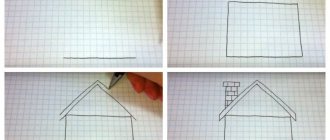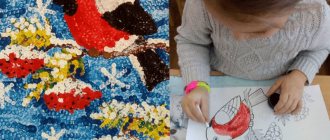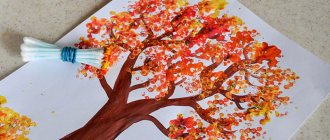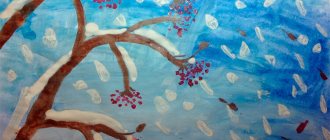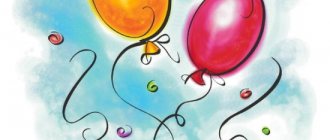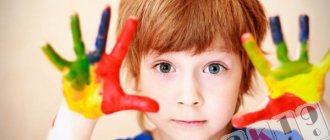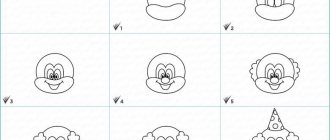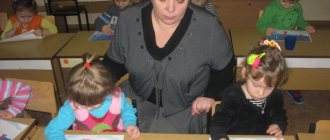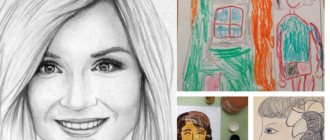Leading psychologists and teachers have long approved the most useful and interesting drawing techniques for children. They are sure that such creative activities not only influence the acquisition of artistic skills and the development of imagination, but also stabilize the child’s nervous system and have a positive effect on his psychological development.
Among the most popular drawing techniques with a preschooler or elementary school student, experts highlight:
- Frottage;
- Air paints;
- Marbled paper;
- Soap painting;
- Blotography (drawing with splashes);
- Drawing on a wet surface;
Frottage is an artistic technique using the rubbing motion of a pencil.
Drawing with air paints
Drawing marble paper
Soap painting
Blotography - splash painting technique
Drawing with salt and glue
Drawing with wax crayons
Balloon drawing
- A bunch of pencils;
- Crayons and starch;
- Multi-colored glue;
- Drawing with salt;
- Wax painting;
- Foam rubber or sponge;
- Drawing with cotton swabs;
- Drawing with handprints, fingers, palms, feet;
- Drawing with balls.
The benefits of creativity for child development
Drawing lessons are a mandatory element of comprehensive development for children 6-7-8 years old.
In particular, they provide:
- Stimulation of fine motor skills, which makes it easier for preschoolers to prepare their hands for writing.
- Development of the right hemisphere, and with it imagination, creativity, creative thinking.
- Conscious perception of real objects, deep knowledge of their properties.
- Education of aesthetic feelings.
- Mastering relaxation techniques, since creativity in any form is considered a powerful meditative tool.
- It works like art therapy: creativity allows, through a concrete or abstract plot, not only to express a personal opinion, but to throw out emotions, reduce fears and anxiety.
- A useful pastime that can later turn into a stable hobby.
- Improving communication and cooperation skills when working in a group.
Why should children learn to draw?
At an early age they work with their fingers, as it is difficult to hold a pencil. This allows you to improve your coordination and learn colors.
Older children are able to draw full-fledged images on paper. During this period, the emotional state constantly changes, new experiences appear, pictures become more interesting.
Drawing objects on paper, like educational coloring books, promotes the development of fine motor skills and teaches concentration. These skills will make life easier in the future.
How to get your child interested in drawing
Encouraging a child to engage in creativity and maintain his interest is the main task of a parent or teacher. Often children refuse to even try to draw, or, as soon as they pick up a brush, they quickly switch their attention to something else, and eventually give up.
To interest your child, you need to:
- propose a topic that is relevant to him, for example, pets, superheroes or favorite cartoon characters.
- experiment with materials: watercolors, finger paints, pastels, painting with light. Some children may not like holding a brush, but they are happy to use their own palms for art, while others, on the contrary, will prefer a pencil, since the structure of the paints is unpleasant for them.
- you need to watch the child, perhaps he himself will tell you what interests him in painting. Once the initiative has been taken, it must be supported.
- the most important thing is to lead by example. A child will be more actively involved in any process if an adult regularly studies and offers to study together.
Online gouache school Art Wave School
Website : https://vangogh.artwaveschool.com Phone Cost : from 4860 rub.
Basic course Transformational painting named after. Van Gogh
The course can be taken by children from 10 years old. There will be exciting tasks and useful exercises + personal support from teachers. You will learn basic techniques for quick painting and right-hemisphere drawing, which will allow you to create spectacular landscapes in a short time. During your training you will write 14 different stories.
The release of lessons was not regulated; after payment, you immediately get access to your personal account, where all the lessons are already available. New course lessons will open as you complete current assignments. Masters check each student’s homework personally and give feedback on it within 24 hours.
Organization of the workspace, course of the lesson
Training should be done at a table or easel. There should be no unnecessary, distracting items in the workplace, only materials necessary for the current lesson. The surrounding space can be protected from possible exposure to paints by laying down a film.
You should sit in the illuminated part of the room and turn on the light if necessary. It is also necessary to limit the room from the possible influence of extraneous phenomena or sound.
Drawing lessons for children 6-7-8 years old can be conducted using an easel
Drawing lessons for children 6-7-8 years old begin with the preparation of tools that the child is introduced to. It is useful to inform the child about the topic of the lesson and briefly explain what will happen.
The creative process depends on the level of children's skills. So, if children are little familiar with this art and have not drawn before, first of all, an adult breaks down the artistic image into elementary figures.
You can start drawing both from the background and from the main object, gradually painting over the remaining areas. The lesson ends with cleaning the workspace. The finished painting can be hung on the wall or framed.
A reminder about the basic materials, suitable tools and their specifics is indicated in the table.
| Material | Mandatory accessories | Possibilities of the material, features of technology |
| Colour pencils | Plain paper, eraser (knead) | One of the most accessible materials will allow you to both practice basic skills and depict realistic objects. |
| Pastel (pastel pencils) | Pastel paper, napkins, nag | Similar to colored pencils, but allows for better shading of the work. |
| Gouache | Plain paper, a set of brushes of different sizes and structures, palette | Budget paints, suitable for beginner artists. |
| Acrylic | Thick paper, brushes: synthetic and bristles, palette knife, palette, tablet | Creates bright, detailed images, adheres well to paper and allows for multiple layers. |
| Watercolor and watercolor markers | Watercolor paper, soft brushes, napkins, palette, liner, tablet | The ability to paint airy pictures and abstractions, use unusual wet technique. |
| Oil | Canvas, set of synthetic brushes, palette knife, palette | Complex and expensive material, used by professional craftsmen. |
Online school of developing drawing method Artsmart-ik
Website : https://artsmartik.ru Phone Cost : from 750 rub.
The school uses original drawing techniques to study various topics that are not taught at school. For example, the study of poetry, modeling, music, psychology, etc. Programs for children from 3 years old.
Children's creative online courses:
- MINI-COURSES for children: “Food illustration”, “Drawing cats”, “Geometric drawing for boys”, “Fashion illustration”, etc.
- Course of development of intelligence through creativity (3 months)
- Basic course “Artist in a month” from 3 to 10 years (9 lessons)
- Drawing course in English with a native speaker from ARTSMARTIK ENG 5-13 years old
Principles of drawing with children aged 6-8 years
Drawing lessons for children 6-7-8 years old should be interesting and bring visible benefits.
Therefore, to get results, you must adhere to a number of rules:
- For creativity, you need to allocate a corner where the child can retire and take the necessary materials for the lesson.
- Drawing should be done in stages - from simple to complex, or from general to specific.
- If it is difficult for a child to come up with a plot on his own, you can ask a specific topic.
- It is advisable to continue the lesson until all the work is ready. You can take short breaks. If a child becomes tired, he should not be forced to continue drawing.
- Classes should be diversified with new tools and non-standard techniques.
- You need to sit down to draw in a good mood. The preschooler should be alert and focused.
You cannot scold a child for drawing incorrectly - the little artist has the right to his own vision of the future image
- The thing to remember is that it can't go wrong. The child has his own vision of an object or landscape; in this regard, creativity allows for greater freedom of expression. At the end of the lesson, you must reward for your efforts.
Tips for parents
Although the benefits of drawing for children are undeniable, there is no need to insist if there is no interest in it at first. You should not neglect other games that will ensure the development of the necessary skills. Make a bull craft for the New Year, read and memorize poems for 2022, solve puzzles in pictures. Monotonous activities quickly become boring, so you should add variety to developmental activities.
Also, parents should not forget about finger games. It is useful to practice modeling from plasticine. The main advice is that there is no need to wait for masterpieces; it is much more important to encourage the baby as much as possible.
Drawing with pencils with children 6-7-8 years old
Drawing techniques
Pencil drawing styles:
- An outline drawing is an image of the appearance of an object or character.
- Adding volume - drawing details, working with light and shadows.
- Hatching : involves making short straight sections. The length, density, and direction of the stroke depend on the author’s idea.
- Shading, or rubbing , of the main lines in whole or in part. The boundaries become less noticeable, the entire image softens. The technique is used to convey the realism of the picture.
Ideas and themes for drawing
List (approximate) of ideas and topics:
- Pet (kitten or dog): 2 large ovals - body and head, 4 smaller ones - paws. Long ears and a tail are added. The muzzle contains a mouth, eyes and nose, and a mustache. A dog may also have a bone, a cat may have a bowl of milk. The animal is painted over by shading or shading.
- Kindergarten (school): ask them to draw their friends, choosing a special color of pencils and shading for each.
- Bright abstraction : secure several pencils together with an elastic band and draw patterns in this way.
- Drawing on tinted paper : paint the paper with watercolors in the chosen color, draw on top with colored crayons or pencils.
Children willingly draw birds and animals (tit in pastels on tinted paper).
Thus, you can depict a field with dandelions on a dark green or blue sheet. To make a flower, you need to draw a circle and a lot of short strokes from it; complement it with a long stem and elongated leaves.
Master class 1
Colored pencil image of “Northern Lights” - materials:
- Colored or pastel pencils.
- Plain white (or pastel) paper.
- Paper napkins.
Northern Lights with colored pencils
Work steps:
- Place the sheet vertically.
- The lower part, about 4-5 cm, is the ground. It is painted over in any form in black or dark green.
- The northern lights appear as sinuous lines that go from one edge of the sheet to the other. The segments are about 1 cm wide, they are hatched with straight lines. For shine, 4 or more shades are used; colors can mix and overlap one another.
- With similar elements the entire space is painted over to the dark bottom.
- Finally, you need to paint the trees and bushes in black (dark green). For Christmas trees, first draw a vertical axis - the trunk; straight or slightly rounded lines extend from it to the right and left. The bushes look like dashes extending from one area in different directions.
Master class 2
Creative work “Cat with a ball”, drawing with pastel pencils.
To create this drawing you will need pastel pencils.
Preparation of tools:
- Pastel pencils.
- Pastel paper.
- Napkins.
- Nag.
The working process:
- The paper is arranged in a vertical format. The work is done in pastels, as it allows for better shading, but it is acceptable to use soft colored pencils.
- The cat's body is an oval, occupying about 2/3 of the sheet. You can immediately draw it with yellow pastels without a simple pencil sketch. Paws extend from the body - 2 more elongated ovals.
- The head is a circle, located on the body, approximately in the center of the sheet. On the head there are triangular ears, they depict 2 smaller triangles as the inner part of the ears.
- At the bottom of the sheet there is a pink ball of round thread.
Cat with a ball of pastel pencils
- First of all, the background is painted over. Light blue, blue and a little black around the edges of the paper are used. Shading can be done with napkins or fingers.
- The cat's body, paws, muzzle and upper part of the ears are painted completely yellow. In the central part of the head, as well as on the legs and body, you can add a little dark yellow to create volume. The contours are outlined in white.
- Muzzle: the nose is drawn pink with a white spot in the middle; for the eyes and mouth, curved lines should be drawn in black. The cat also has light eyebrows and long straight whiskers. The inner areas of the ears are painted with pink and white pastels. The boundaries of colors are blurred.
- The ball is painted pink in combination with purple, individual threads are drawn in pink and white. Also, the threads lie in semicircles around the cat and encircle its body and paws.
Features of teaching children of different ages
The best way for children to learn to draw depends largely on age. At one year old it is enough to scribble, and parents should not interfere with this, strongly encouraging and helping.
2-4 years
At this age, you should draw using the finger technique. The child learns how to handle a brush or pencil, and parents must show how to make a circle and spirals from a line.
From the age of three, children watch how adults handle pencils and paints, beginning to imitate. Mom or dad should, together with the child, form houses, mushrooms, the sun, not forgetting to praise for success.
Then you need to add other tools, get acquainted with gouache, learn to paint outline pictures.
5-7 years
Preschoolers should be taught how to use a pencil and brushes. You can offer coloring pictures, images of simple geometric shapes. It is necessary to conduct classes with horizontal and vertical shading.
In order for a child to develop a desire to draw, it is necessary to look at bright pictures together.
At this age, you need to not only praise, but also unobtrusively point out shortcomings, giving advice on correction.
Drawing with paints with children 6-7-8 years old
Drawing techniques
Methods of working with gouache and acrylic:
- “Dry brush”: put a small amount of paint on the tool and make light movements over the picture. This way the colors are muted, creating the effect of old paintings.
Dry brush painting
- “Dipping” and “poking.” Grass and plants, animal fur, glare of light - everything can be done by applying perpendicular pressure with a brush onto the paper.
- “Liquid acrylic” is a mixture of acrylic paint with glue and silicone. Thanks to its structure, it allows it to flow across the canvas in different directions, creating surreal patterns.
- The right-hemisphere type of drawing is painting in an intuitive manner without preliminary drawing of details.
- Using stencils. They can be figures cut out of cardboard, which are transferred to paper and then painted.
- Prints – creating a design using stamps, rollers, hands, natural elements, such as dry leaves.
- Drawing with thread: dipping a thread into paint and moving it randomly along the paper.
Examples of watercolor techniques that are suitable for teaching drawing lessons to children 6-7-8 years old:
- Wet: multi-colored spots are placed on a sheet moistened with water, creating an airy, delicate picture. It can serve as a background, and other layers can be applied on top to refine the elements.
Grisaille style
- Watercolor spots – filling the image with abstract color spots.
- Grisaille is a style made in black and white or simply one color.
- Blowing: A straw blows air onto a large spot of watercolor paint, causing it to stretch into intricate shapes. This way you can create the sun and grass, a flower, a balloon, and sea creatures.
Ideas and themes for drawing
List of ideas:
- Autumn in the style of Afremov: by applying the fleecy surface of the brush, create multi-colored leaves throughout the image. After drying, paint the path and trees along it with a dark color. For this work, gouache or acrylic and a medium brush with a semicircular or square cut are suitable.
- Fantastic blue forest: complete the craft in only one color, varying its saturation. If this is a winter landscape, using the tapping method you can create splashes of white on top, which will look like falling snow.
Space in watercolor
- Space: paint a large landscape sheet with a purple tint and put yellow dots (stars) around the entire perimeter. Then cut out cardboard circles of the required size (planets) and decorate them with wet-on-wet watercolors. The child can experiment with the colors of celestial bodies or rely on their appearance presented in books.
- Bouquet of palms: draw a free-form vase. Then paint the child’s palm with gouache and attach it to the paper, do this several times. Add twigs and greenery.
- Fruit still life: depict a semicircular plate; use a large foam brush to stamp the shape of apples onto the paper, and use a small brush to make a bunch of grapes in the same way.
Master class 1
Drawing lessons for children 6-7-8 years old in the direction of right-hemisphere techniques, exercise “Seascape”.
Required tools:
- Set of gouache, whitewash.
- A sheet of white paper.
- Synthetic brushes: medium No. 7 and small No. 3.
- Container with water.
Gouache is an easy-to-paint paint that is suitable for children
. Work progress:
- The sheet is laid horizontally and divided into 3 approximately equal parts: the upper third will be the sky, the rest will be water.
- In the sky area, a few drops of white and blue paint should be placed on the sheet, then stretched across the entire upper space. The sky needs to dry before the next step.
- Clouds: white gouache is picked up on a round brush or fingertip, and the paint is smeared in a circular motion on a certain area. The number of clouds is optional; they can be of different sizes and shapes.
- The sea is performed similarly to the sky. Only when creating it, in addition to white and blue paint, blue and a little green (turquoise) are taken. A few drops are placed on the sheet, they are mixed in horizontal masks.
- There will be an island with a tree in the left corner. The first layer of earth is black; ocher and greenery are added on top using the poking method. It is convenient to paint the island with a brush with bristles.
Seascape in gouache
- A tree consists of a trunk and thin branches. First, they are drawn with black gouache - shadow areas; ocher is superimposed on it in some places, imitating light. The leaves are predominantly green, with some yellow in some places.
- There is also a piece of land in the sea - an elongated, uneven oval of black color combined with ocher.
- Ships: dark boat and light sails. The bottom is a thick horizontal line, and the sails can be drawn as elongated semicircles. These elements are created with a thinner brush. A shadow from the boats can be seen falling on the water; it is depicted using whitewash and looks like a tapering zigzag.
- The picture ends with the image of 2 flying birds: they are drawn in the form of checkmarks.
Master class 2
Drawing lessons for children 6-7-8 years old with watercolors, “Flowers in a vase.”
What you need for work:
- Watercolor.
- Watercolor thick paper.
- Tablet.
- Brushes: large No. 30, medium (for example, No. 6 or 7) and small (No. 1-2).
- Water in a glass.
- Palette.
- Paper napkins.
Flowers in a vase in watercolor
Work progress:
- The paper lies vertically in front of the child, for convenience it is fixed on a special tablet or taped to a flat surface. Using a wide brush, wet the entire paper surface with clean water; While the sheet is wet, you need to draw the main details.
- The vase is depicted in the form of a circle or oval in blue watercolor. A shadow is created on the left side of the vase: blue must be drawn up and down several times, the center remains white as the most illuminated place.
- Flowers. First you need to do a tone fill. To do this, take pink watercolor, diluted with a large amount of water, and use a round brush to place large spots in different places. Yellow, purple and green shades appear in the same way.
- Flower detailing. Use a small brush to add red, orange, blue and deep purple dots on top of the first abstract layer. The flowers extend from the vase and can go up and to the side.
- A shadow falls next to the vase on the left; it can be made faded lilac. The same paint is used to depict the table on which the vase stands in horizontal strokes.
Online school Skyeng “Skyclass”
Website : https://www.sky-class.ru Phone Cost : first lesson free, 2990-3990 rubles/course
Drawing for kids
The course is aimed at the early development of imagination, creativity and artistic taste in children from 5 years old. The program includes: more than 10 different drawing techniques, applications and crafts, as well as step-by-step instructions that will help you draw real pictures in different genres.
The online course is designed for 5 months of training at a pace of 2-4 video lessons and interactive game tasks per week.
Drawing: advanced course
The course is for children from 10 years old, suitable for both beginners and those who have already tried their hand at drawing and want to develop further. The program includes: the basics of color, composition, classical drawing, as well as the study of modern trends and techniques, including lettering, sketching, fashion illustration and much more.
The online course is designed for 6 months of training at a pace of 2-3 video lessons and assignments per week.
To complete the course, your child will need a little independence, the ability to use a tablet or computer, and a set of materials for creativity - you will receive a complete list at the beginning of the course.
You can study at any time convenient for you, and a personal curator answers questions via chat 24/7. Parents will receive detailed instructions on how to help their child. For some modules you will need to print out assignments (coloring books, copybooks, cards).
Recommendations from psychologists and teachers
Experts recommend following these tips when drawing with children:
- The time for the drawing lesson should be clearly defined. The child must understand when and what is required of him.
Psychologists recommend creating a curriculum for drawing lessons for children
- It is useful to draw up a training program, gradually supplement and complicate it.
- The chosen topics for creativity should be within the child’s area of interest.
- There is no need to do for the child or intrusively tell him how to do it. Explain the topic, show an example of an image or creative technique - the child tries to do the rest himself, as best he can.
- The process may require the parent to maintain interest by commenting on the work and asking leading questions about the plot and characters.
- Often, music is turned on to create an atmosphere: classical or a calm, relaxing melody without words.
Drawing lessons for children should be focused on the child’s age of 6-7-8 years and his development zone. Closer to school and in the primary grades, children are already able to hold attention for a long time, but you should not offer to make an overly complex picture or more than 2 drawings at a time.
With the right approach, attentive attitude and patience, you can instill in your child the desire to develop such an exciting and multifaceted activity as drawing.
And if a little person has not only a desire, but also at least a little talent, such an activity will not only help develop most creative skills, but can also develop into an artistic profession in adulthood.
How to draw beautiful and easy drawings by cells
You can decorate a child’s workbook or personal diary with beautiful drawings in the cells:
| Image option | Creative process algorithm |
| 1. Determine the starting point, placing it closer to the left edge of the work surface. 2. Create an image following the instructions: 1 cell. to the right, 1 cl. up, 3 cells to the right, 1 cl. down, 1 class. to the right, 1 cl. down, 1 class. left, 1st cell. down, 1st class left, 1st cell. down, 3 cells to the right, 1 cl. down, 2 cells left, 2 cells down, 1 class. to the right, 2 cells. down, 1 class. to the right, 1 cl. down, 3 cells left, 2 cells up, 1 cl. left, 2 cells down, 3 cells left, 1st cell. up, 1 cl. to the right, 2 cells. up, 1 cl. to the right, 2 cells. up, 2 cells left, 1st cell. up, 3 cells to the right, 1 cl. up, 1 cl. to the right, 1 cl. up. 3. Complete the face of the resulting person. | |
| 1. Determine the starting point, placing it closer to the upper left edge of the work surface. 2. Create an image following the instructions: 1 cell. up, 1 cl. to the right, 3 cells. down, 2 cells to the right, 3 cells. up, 1 cl. to the right, 5 cells. down, 1 class. to the right, 1 cl. up, 1 cl. to the right, 1 cl. down, 3 cells left, 1st cell. up, 2 cells to the right, 1 cl. up, 2 cells left, 2 cells up, 1 cl. to the right. 3. Draw the appearance features of the resulting dog (eyes, nose, mustache, mouth, claws). |
Perotti School of Art online
Website : https://www.perottischool.ru Phone , +7 (926) 183-38-01 Cost : from 2500 rubles/course
Courses:
“I AM AN IMPRESSIONIST” 14 lessons = 6 children’s works in the impressionist style
Ideal for children 6-11 years old and their mothers, fathers, grandparents. The child will learn about what impressionism is, where it came from, hear short stories about artists, master the basic principles of impression painting and get acquainted with the masterpieces of world painting. 14 lessons = 6 children's works in the impressionist style.
Main Art Course by Perotti for children 7 months, 28 lessons = 28 masterpieces
From 6 to 13 years. The course program is based on three “pillars”: art history, acquaintance with artists and their masterpieces, and practical study of the laws of drawing and painting. In practice, we will get acquainted with the discoveries and secrets of great artists and learn to apply them in our own creative works.
Training format: independently or with checking homework.
New courses coming soon:
- Magical animal art for children with Sveta Perotti
- Portrait in FASHION style with Tatyana Polyakova 11+, etc.

